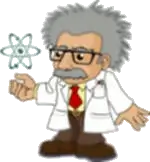Combinations - elements
If we increase the number of elements by 1, the number of combinations of the third class without repetitions increases by 10. How many elements do we have?
Final Answer:

Tips for related online calculators
Are you looking for help with calculating roots of a quadratic equation?
Would you like to compute the count of combinations?
Do you have a linear equation or system of equations and are looking for its solution? Or do you have a quadratic equation?
Would you like to compute the count of combinations?
Do you have a linear equation or system of equations and are looking for its solution? Or do you have a quadratic equation?
You need to know the following knowledge to solve this word math problem:
combinatoricsalgebrabasic operations and conceptsGrade of the word problem
Related math problems and questions:
- Variations 70724
 If we increase the number of elements by 2, the number of variations of the second class without repetition increases by 22. How many elements do we have initially?
If we increase the number of elements by 2, the number of variations of the second class without repetition increases by 22. How many elements do we have initially? - Repetitions 2956
 How many elements do we have if the variation of the third class without repetitions is ten times more than the variation of the second class?
How many elements do we have if the variation of the third class without repetitions is ten times more than the variation of the second class? - Combinations
 From how many elements can we create 990 combinations, 2nd class, without repeating?
From how many elements can we create 990 combinations, 2nd class, without repeating? - Combinations
 If the number of elements increases by 3, it increases the number of combinations of the second class of these elements five times. How many are the elements?
If the number of elements increases by 3, it increases the number of combinations of the second class of these elements five times. How many are the elements? - Third-class 8334
 If we add one element to set A, the number of third-class variations increases two times. How many elements did the set initially contain?
If we add one element to set A, the number of third-class variations increases two times. How many elements did the set initially contain? - Combinations 80637
 If the number of elements decreases by 4, the number of combinations of the second class from these elements decreases three times. How many elements are there?
If the number of elements decreases by 4, the number of combinations of the second class from these elements decreases three times. How many elements are there? - Variations 3rd class
 From how many elements can we create 13,800 variations of the 3rd class without repeating?
From how many elements can we create 13,800 variations of the 3rd class without repeating?
